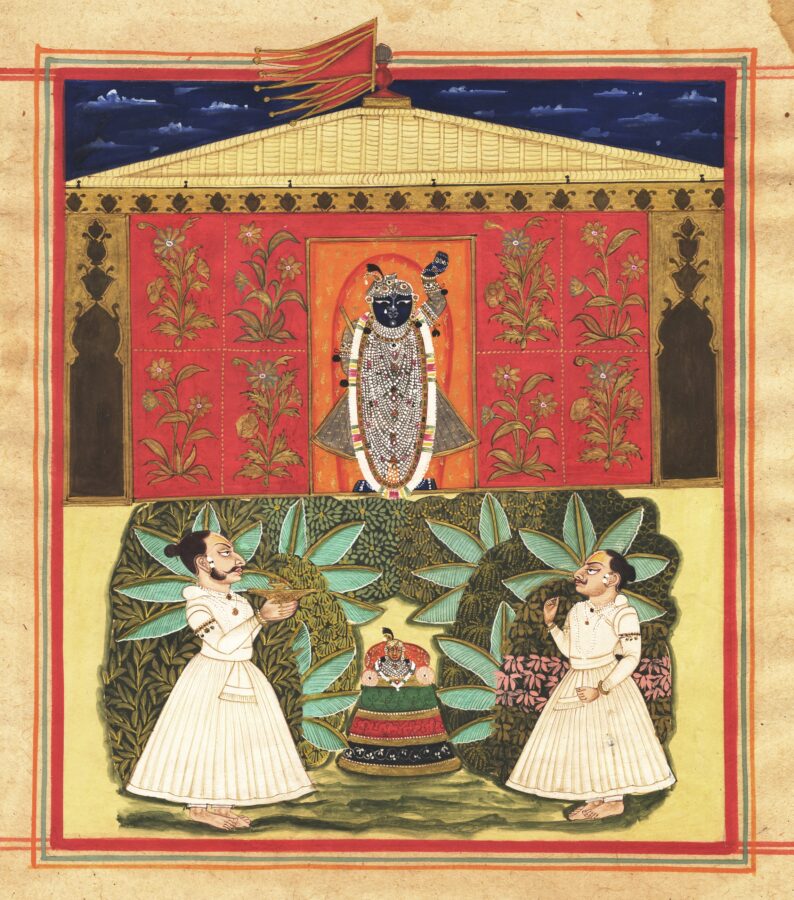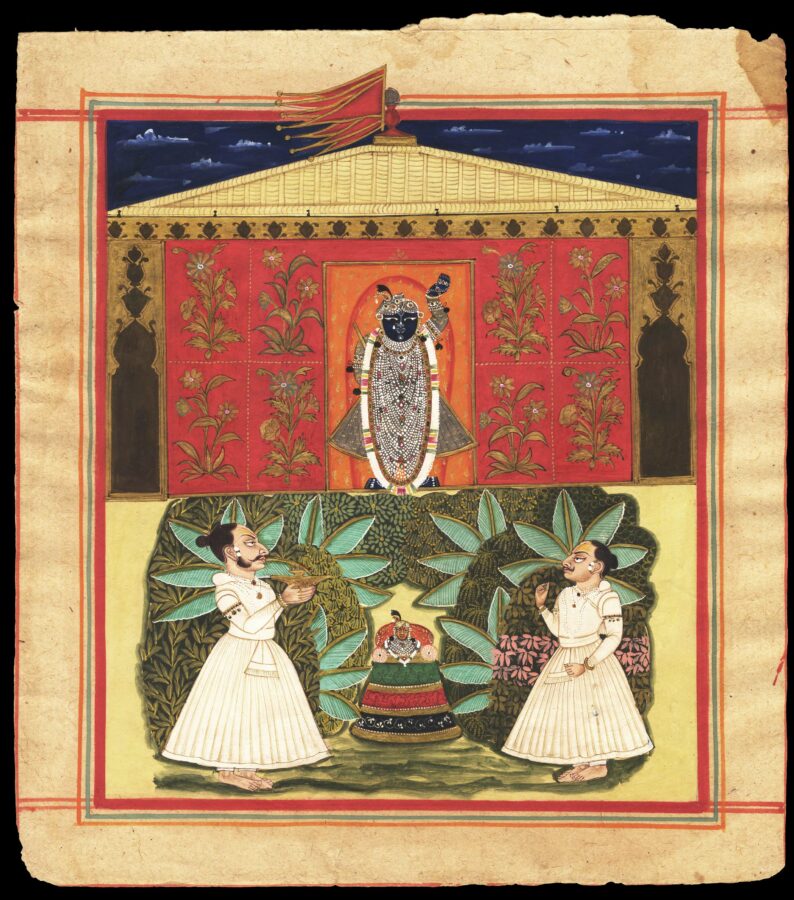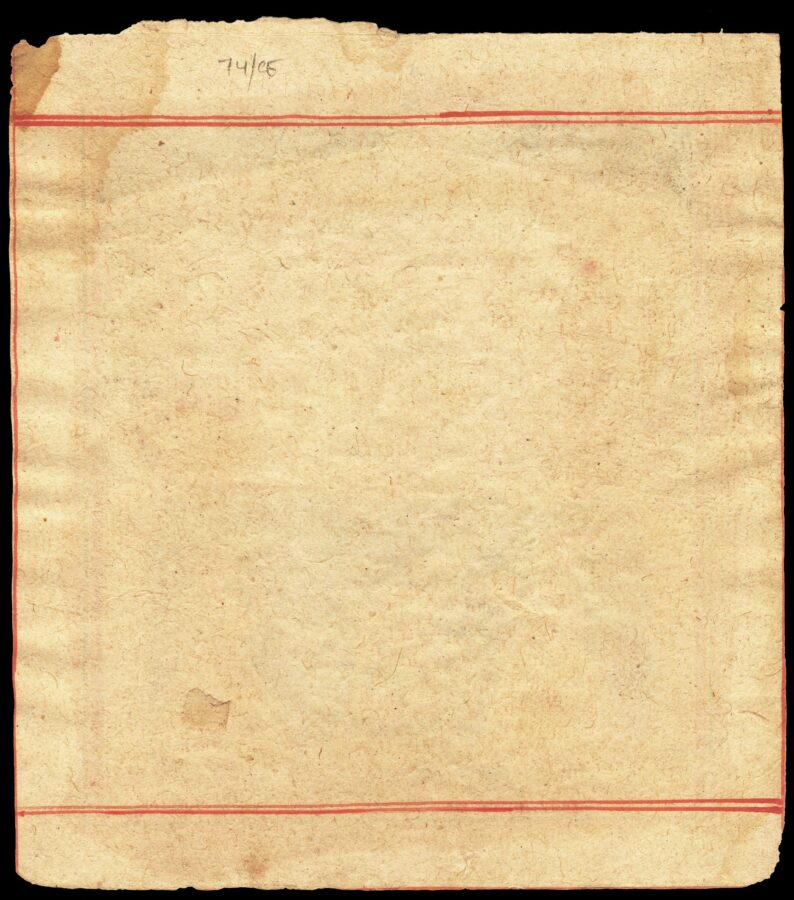This painting of the Srinathji manifestation of Krishna shows Srinathji wearing a silver jama that is visible against the marigold-orange background, within beautifully painted temple walls that are decorated with gilded flowers against a red background, all beneath a white canopy (chandova) that is topped by a fluttering temple flag. Srinathji’s skirt (kachni) is full length and covers his chest. Accordingly, the festival scene being depicted must be occurring in Winter with Srinathji being dressed accordingly. He wears ample jewels in the manner of a prince, and a jewelled crown (mukut). A flute (venu) protrudes over his right shoulder.
Banana plants and other shrubs have been placed before Shrinathji. The Gosaijis (priests that belong to the Pushtimarg sect) wear bright white robes. Possibly, they represent Vitthalnathji and Purushottamji, descendants of Vallabhachatya, the founder of the Pushtimarg sect. Each has a U-shaped tilaka mark on the forehead to identify him as a Viashnava. Each wears several pearl necklaces and pearl ear ornaments which are typical of that part of Rajasthan. Both have hair knots to the back of the head. Both look wealthy and probably they were. Senior priests in Nathadwara often were given large land grants which made them wealthy as individuals.
The priest on the left holds an arti lamp is making a fire offering to Shrinathji.
The commissioning of such a painting can be considered an offering to God as an act of loving service (seva).
This painting can be ascribed to the Kota School – the figures are stout with oblong noses and bulging eyes, and there is use of bright tone of colour. It belongs to a type of painting inspired by the tradition of pichhwai painting whereby large cotton canvases were painted with scenes to adorn temple walls. Pichhwais were most particularly used in Krishna temples allied to the Pushtimarg sect, mostly in Rajasthan. Most pichhwais were made in Nathadwara, a Rajasthani temple town just north of the important Rajput city of Udaipur.
The painting here is in excellent condition. There is an old water stain to the plain field of the top right corner of the page but this does not extend to the actual painting itself. The painting is not currently framed.
References
Cummins, J. (ed.), Vishnu: Hinduism’s Blue-Skinned Savior, First Center for the Visual Arts/Mapin Publishing, 2011.
Ghose, M. (ed.), Gates of the Lord: The Tradition of Krishna Paintings, Art Institute of Chicago, 2015.




